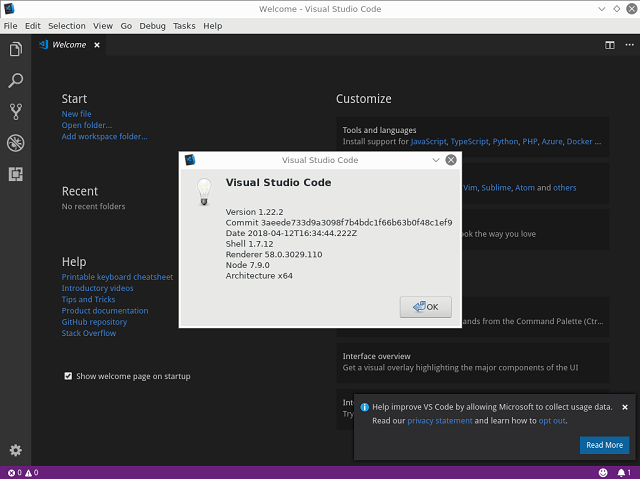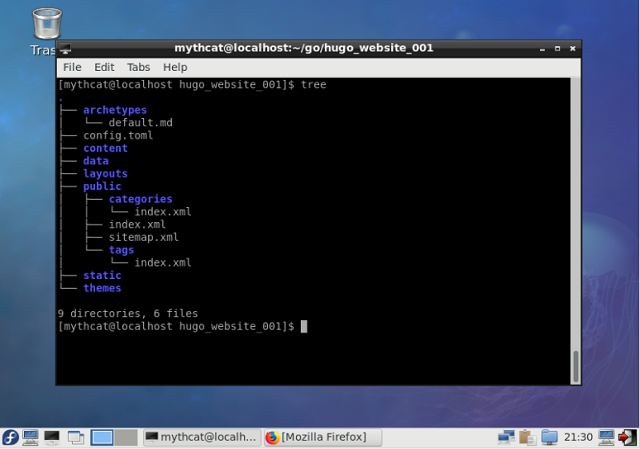The content for this application is available under Creative Commons Attribution Share Alike. LibreCAD is a free and open-source and can be downloaded from official webpage.
Let's see the install process of this tool:
[root@desk mythcat]# dnf install librecad.x86_64
Last metadata expiration check: 3:00:39 ago on Fri 11 May 2018 07:51:19 PM EEST.
Dependencies resolved.
================================================================================
Package Arch Version Repository Size
================================================================================
Installing:
librecad x86_64 2.1.0-7.fc28 fedora 2.3 M
Installing dependencies:
libdxfrw x86_64 0.6.3-8.fc28 fedora 438 k
librecad-fonts noarch 2.1.0-7.fc28 fedora 11 M
librecad-langs noarch 2.1.0-7.fc28 fedora 603 k
librecad-parts noarch 2.1.0-7.fc28 fedora 903 k
librecad-patterns noarch 2.1.0-7.fc28 fedora 217 k
shapelib x86_64 1.4.1-2.fc28 fedora 80 k
Transaction Summary
================================================================================
Install 7 Packages
Total download size: 15 M
Installed size: 109 M
Is this ok [y/N]: y
Downloading Packages:
(1/7): libdxfrw-0.6.3-8.fc28.x86_64.rpm 658 kB/s | 438 kB 00:00
(2/7): librecad-langs-2.1.0-7.fc28.noarch.rpm 1.4 MB/s | 603 kB 00:00
(3/7): librecad-2.1.0-7.fc28.x86_64.rpm 1.5 MB/s | 2.3 MB 00:01
(4/7): librecad-parts-2.1.0-7.fc28.noarch.rpm 1.6 MB/s | 903 kB 00:00
(5/7): shapelib-1.4.1-2.fc28.x86_64.rpm 1.3 MB/s | 80 kB 00:00
(6/7): librecad-patterns-2.1.0-7.fc28.noarch.rp 1.3 MB/s | 217 kB 00:00
(7/7): librecad-fonts-2.1.0-7.fc28.noarch.rpm 3.0 MB/s | 11 MB 00:03
--------------------------------------------------------------------------------
Total 3.5 MB/s | 15 MB 00:04
Running transaction check
Transaction check succeeded.
Running transaction test
Transaction test succeeded.
Running transaction
Preparing : 1/1
Installing : shapelib-1.4.1-2.fc28.x86_64 1/7
Running scriptlet: shapelib-1.4.1-2.fc28.x86_64 1/7
Installing : librecad-patterns-2.1.0-7.fc28.noarch 2/7
Installing : librecad-parts-2.1.0-7.fc28.noarch 3/7
Installing : librecad-langs-2.1.0-7.fc28.noarch 4/7
Installing : librecad-fonts-2.1.0-7.fc28.noarch 5/7
Installing : libdxfrw-0.6.3-8.fc28.x86_64 6/7
Running scriptlet: libdxfrw-0.6.3-8.fc28.x86_64 6/7
Installing : librecad-2.1.0-7.fc28.x86_64 7/7
Running scriptlet: librecad-2.1.0-7.fc28.x86_64 7/7
Verifying : librecad-2.1.0-7.fc28.x86_64 1/7
Verifying : libdxfrw-0.6.3-8.fc28.x86_64 2/7
Verifying : librecad-fonts-2.1.0-7.fc28.noarch 3/7
Verifying : librecad-langs-2.1.0-7.fc28.noarch 4/7
Verifying : librecad-parts-2.1.0-7.fc28.noarch 5/7
Verifying : librecad-patterns-2.1.0-7.fc28.noarch 6/7
Verifying : shapelib-1.4.1-2.fc28.x86_64 7/7
Installed:
librecad.x86_64 2.1.0-7.fc28 libdxfrw.x86_64 0.6.3-8.fc28
librecad-fonts.noarch 2.1.0-7.fc28 librecad-langs.noarch 2.1.0-7.fc28
librecad-parts.noarch 2.1.0-7.fc28 librecad-patterns.noarch 2.1.0-7.fc28
shapelib.x86_64 1.4.1-2.fc28
Complete![mythcat@desk ~]$ librecad
RS_DEBUG::setLevel(3)
RS_DEBUG: Critical
RS_DEBUG: Errors
RS_DEBUG: Warnings
libpng warning: iCCP: known incorrect sRGB profile
You can used to test your skills into the area of
The official manual can be found here.
This is a screenshot from my Fedora 28 distro:




 Using this tool with Fedora 28 is easy.
Using this tool with Fedora 28 is easy.












